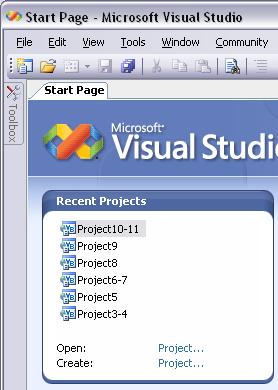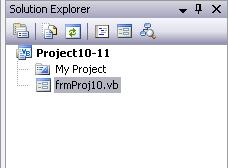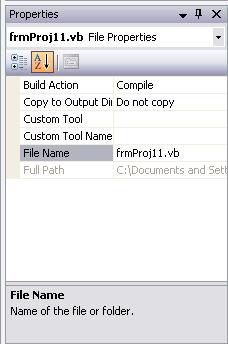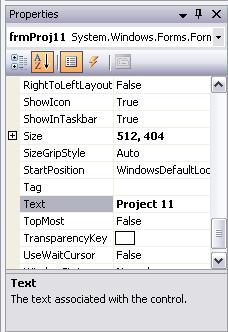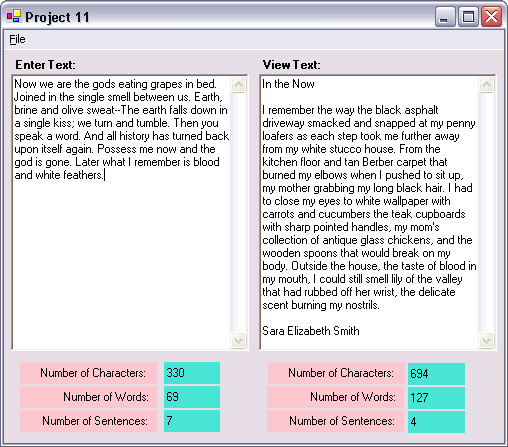The first If-Then-Else test above increments the Character counter
unless the user typed the Backspace key.
If they type the Backspace key, we assume
they deleted a character so we
decrement the Character counter. But what about the
Delete key? We cannot test for the
Delete key in the
KeyPress event procedure.
Using the
KeyDown
event procedure
Textboxes actually have two event procedures that process
keystrokes. So far we have only used the
KeyPress event procedure. There is also a
KeyDown event procedure. The
difference between the two event procedures requires a little explanation of
how the keyboard sends keystroke codes to the operating system. When you
type a key on the keyboard it transmits two numbers to the operating system.
The first number is processed by the KeyPress
event procedure, the second number is processed by the
KeyDown event procedure. The
majority of keys on the keyboard send the number code that represents the key
stroke in the first number, and so we use the
KeyPress event procedure to process most keystrokes. But
there are also a set of keys that send the number code that represents the
keystroke in the second number. These keys include the Function Keys,
Page Up and Page Down keys, Insert, Home, End,
and Delete keys. In order to detect
when the user types the Delete key, we
need to add the following code to the
txtEnter_KeyDown event procedure:
'If the user typed the
Delete key, decrement
' the Character counter.
If
e.KeyValue
= Keys.Delete
Then
lblChars1.Text =
CInt(lblChars1.Text)
- 1
End If
Creating the
CWS_Counter
procedure
The above code takes care of counting Characters,
Words, and Sentences in the Enter Text textbox (txtEnter) while the
user is typing. To count the same
elements of a text file that we read and display in the
View Text textbox (txtView),
we will create our own custom procedure. One big difference between a procedure you create and an event procedure
that comes built into a Control, is that your created procedure must be called
manually. The Event Procedures of a control are executed when the
user raises an event by interacting with the
control, by clicking on it, passing the mouse over it, etc. We will
create a custom procedure to count the Characters,
Words, and Sentences in the View Text textbox. To create your custom procedure do the following:
Insert a blank line above the End Class statement at the bottom of the code
window, type the following line and press the Enter key:
Public Sub
CWS_Counter(ByVal
Str
As String)
The End Sub statement should appear
automatically below your cursor after you press enter (as shown in the
illustration below):

Our CWS_Counter procedure will
count the Characters,
Words, and
Sentences of a string (Str)
that is passed to it. We will use a For-Next
loop and scan through the string one character at a time.
Let's begin by dimensioning three variables to keep track of the Characters,
Words, and Sentences.
Add these three dimension statements at the top of the
CWS_Counter procedure:
'Use these variables to
count the number of
' Characters, Words, and Sentences
in Str
Dim
iChars As Integer
Dim iWords As
Integer
Dim iSents As
Integer
Using a
For-Next
loop
This is the format of a For-Next loop (do
not type this code):
For
<Counter variable>
= <Start value>
To
<Limit value>
Step <Step value>
...
<loop code goes here>
...
Next
The <Counter variable> is
initialized to a starting value, and then compared to the
<Limit value>. If the
<Counter variable> is less than or equal
to the <Limit value> the code between
For and Next
is executed. Then the <Counter variable>
is incremented by the <Step value> and
the <Counter variable> is compared to
the <Limit value> again. The
process continues until the <Counter variable>
exceeds the <Limit value>, and the
loop exits. The Step part of the
code above is optional. The step is +1 by default.
We will use the iChars variable as our
loop counter. Type the following line of code
into the CWS_Counter
procedure (below the three dimension statements):
'Start at
character position 1 and go
' to the Length of Str minus 1.
For
iChars
= 1
To Str.Length
- 1
String variables have a Length property
that is equal to the number of characters in the string, so we are using
Str.Length as
the limit for our For-Next loop. We
are actually using
Str.Length
- 1 as the limit because the first
character of the string is at index position 0. This means that
Str.Length would
be equal to 50 for a string that was 50 characters long; But that the last
character in the string would be at index position 49.
Using the
SubString
method of a String
to examine
single
characters inside it
String variables also have a SubString
method that lets you examine or extract pieces of a string. We will use
the
SubString method of
Str to look at individual characters in
the string. This is the format of the SubString method:
Str.Substring(<Start
Char Position>,
<Number of Characters>)
Add the following code inside the For-Next
loop:
'Check if the char at
position iChars is a Space
If
Str.Substring(iChars,
1)
=
" "
Then
iWords
+= 1
'Check if the
char at position iChars is a Period
ElseIf
Str.Substring(iChars,
1)
=
"."
Then
iWords
+= 1
iSents
+= 1
End If
Note: Because
iChars is our loop counter variable, it starts out equal
1 and grows one larger each time the loop
is executed. We are using iChars
in the SubString method to designate the
character position in Str that
we want to examine. By the time the loop is finished—with
iChars incrementing with each iteration—we will have
examined every character in the string.
Notice how in the code above, we are using the +=
operator to increment the iWords and
iSents variables, instead of the older method
of making them equal to themselves plus one, like this: iWords = iWords + 1. Take a look at this code
comparison (do not type this code):
This:
iWords
+= 1
does the same as this:
iWords
=
iWords
+ 1
Note: There are also
several other operators of this type, for example: -= (the variable is
equal to itself minus some value), *=
(the variable is equal to itself multiplied by some value) and
&= (the string variable is equal to
itself and joined to another string).
Once the loop is finished, we can assign the values in
iChars, iWords, and
iSents to the counter labels. Add the following code below the
Next
statement in the CWS_Counter
procedure:
'Assign the final values
to the
' View Text counter labels.
lblChars2.Text
=
iChars
lblWords2.Text
=
iWords
lblSents2.Text
=
iSents
This is a summary of the code in the
CWS_Counter procedure:
'Use these
variables to count the number of
' Characters, Words, and Sentences
in Str
Dim
iChars As Integer
Dim iWords As
Integer
Dim iSents As
Integer
'Start at character
position 1 and go to
' the Length of Str minus 1.
For
iChars
= 1
To Str.Length
- 1
'Check if the char at position iChars is a Space
If Str.Substring(iChars,
1)
= " "
Then
iWords
+= 1
'Check if the char at position iChars is a Period
ElseIf Str.Substring(iChars,
1)
=
"."
Then
iWords += 1
iSents += 1
End If
Next
'Assign the final values to the View Text counter labels
lblChars2.Text
= iChars
lblWords2.Text
= iWords
lblSents2.Text
= iSents
Make sure your code matches the above code before going on.
Calling the
CWS_Counter
procedure from mnuOpen_Click
To use the CWS_Counter procedure we
need to call it and pass it the contents of the View
Text textbox (txtView). The best place to do this is
immediately after filling the View Text
textbox. Look inside the mnuOpen_Click
event procedure. Insert the call to CWS_Counter
(in large italicized font below), where shown below. This single
line of code is being inserted into the existing code of
mnuOpen_Click:
